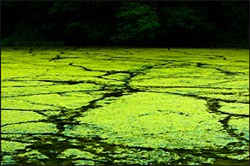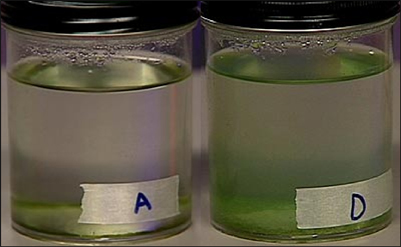Search:
Page Number:
An Explosion of LifeSkills Reference 2 Skills you Will Use
Safety
Caution In this lab you will be dealing with aquarium water and algae. Use goggles to protect your eyes and an apron to protect your clothes. Fertilizers are often applied to fields and gardens to supply plants with nutrients, such as the elements nitrogen and phosphorus. However, this fertilizer can wash into local water and streams, resulting in high levels of nutrients in ponds and lakes. This can cause algae to grow much more rapidly than it normally would, a process known as eutrophication. 
As the large amount of algae dies, it decomposes, removing oxygen from the water, which can cause animals in the water to die. In this activity, you will investigate the affect of fertilizer on algae growth. QuestionHow does the amount of fertilizer affect algae growth? Materials and Equipment
Dry LabA "dry lab" activity includes collected data and/or a video solution for your convenience. You can simply watch the following video and use the provided data, or if you wish to perform this lab for yourself, follow the procedure steps 1 through 6 described in the video. The same steps are included in written form in the documents available for download on the bottom of this page. Forming Conclusions
|
